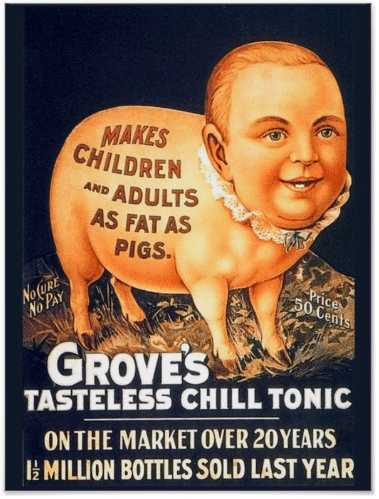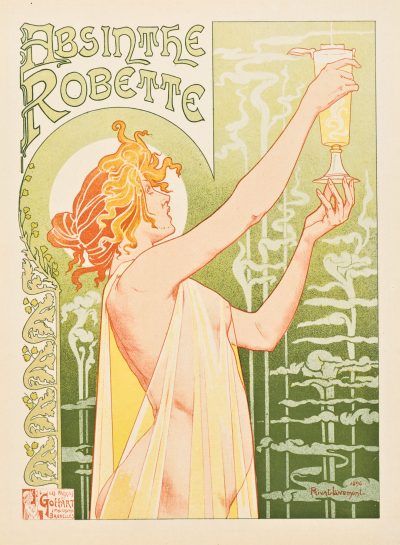Grove’s Tasteless Chill Tonic’s Tasteless Advertising
Ironically lemon flavoured, Grove’s Tasteless Chill Tonic was a medicine created to help fight the fevers that came along with contracting Malaria. Invented by an American pharmacist, Edwin Wiley Grove, the tonic went to market in 1885 to critical acclaim. The active ingredient was quinine, which is actually effective in combating Malaria by modern measures, though it certainly didn’t help anyone gain weight. This ad harkens back to when you could make any claim you wanted about a product in your advertising, and no one would bat an eye. Though the original artist is unknown, I applaud them for their creativity. Gosh… What an ugly poster.
Les Papier JOB — Beautiful Ads That Harm Your Health
Art Nouveau, my old friend, we meet again! But this time, I’m sad to see you peddling cigarette papers. Tisk, tisk.

Jean Bardou founded JOB when he came up with creating tiny booklets of flavoured rolling papers made from rice paper. Flavours included vanilla, juniper, and anise. (I wonder if anyone ever tried to eat em?) The papers were sold in elegant boxes and marketed toward French women who wanted to feel confident and attractive. In the late 1890s, the company hired many creatives to design ad posters, including prominent art nouveau daddy Alphonse Mucha. His illustration depicts a goddess holding her rolled cigarette confidently while entirely at ease. Mucha was said to have drawn inspiration from Michelangelo’s work, Sibyls in the Sistine Chapel. The poster was so successful for JOB, it was produced and sold to the public as a lithograph.

Amazingly, JOB rolling papers still exist today and In 2008 they hired the artist, Paul Harvey, to create poster ads that harken back to Mucha’s original work for JOB back in the 1890s.
Absinthe Robette — Livemont And The Green Fairy
Absinthe is an anise-flavored spirit derived from plants, refined spices, and the leaves from the woodworm tree. It’s olive green in colour and said to be extremely high in alcohol content. The spirit is referred to as “the green fairy” and was banned for a time because it was believed to cause violent and dissociative behaviour. Some believe the negative image was spurred along by the wine industry’s attempt to eliminate their competition.
Artist Henry Privat-Livemont created the poster for Absinthe Robette in 1898. He harnesses the essence of the then-popular spirit by using the attractive olive green colour and the mysterious and mystified way the woman looks at the glass she is holding. Livemont was considered one of the masters of poster design in his time. Like Mucha, he focused on the feminine figure and gentle confidence that sells the product at hand as elegant and sophisticated.
References:
https://en.wikipedia.org/wiki/Absinthe
https://www.timwestover.com/news/2019/9/5/groves-tasteless-chill-tonic
https://en.wikipedia.org/wiki/Alphonse_Mucha


Leave a Reply